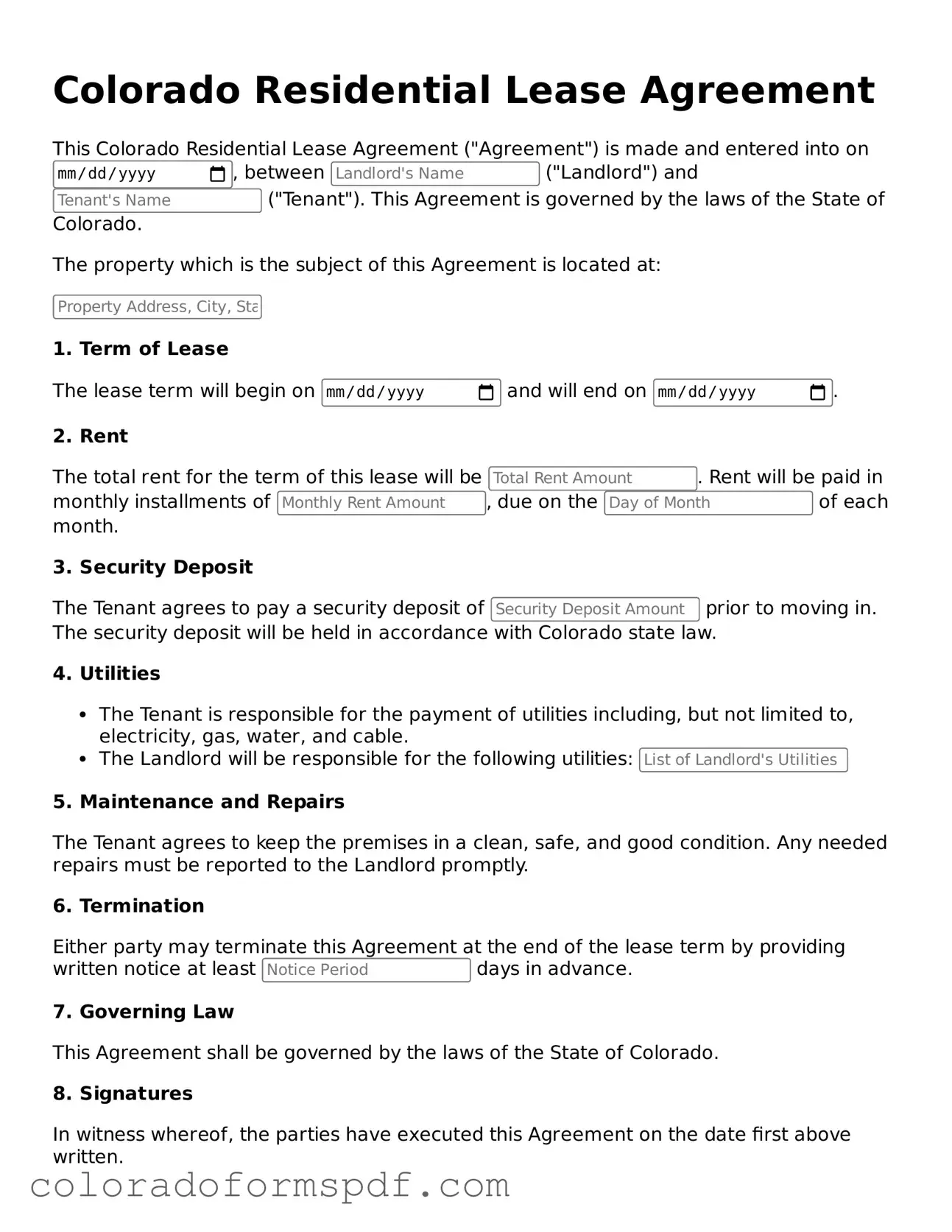Official Residential Lease Agreement Template for Colorado State
The Colorado Residential Lease Agreement is a legal document that outlines the terms and conditions between a landlord and a tenant for renting a residential property. This agreement serves to protect the rights of both parties and ensures clear communication regarding rent, maintenance, and other responsibilities. Understanding this form is essential for anyone involved in renting or leasing a home in Colorado.
Get Document Online
